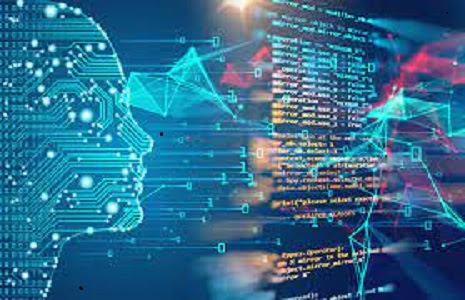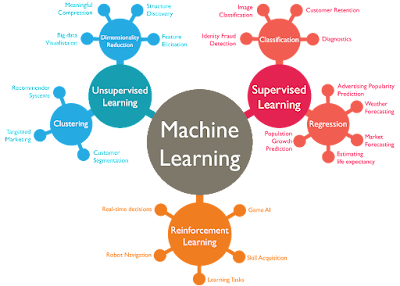Machine learning can be a difficult topic to comprehend, so it is essential to divide it down into manageable chunks of information.
This step-by-step guide will help you understand Details about machine learning
What is the definition of Machine Learning?
Machine learning is a subfield of artificial intelligence (AI) that concentrates on the development of algorithms and models that enable computers to automatically learn and make predictions or decisions. It is predicated on the notion that machines can automatically learn and develop based on experience and data.
In conventional programming, developers write explicit instructions to instruct a computer how to complete a given task. In machine learning, however, instead of explicit programming, the computer learns patterns and relationships from data in order to make predictions, recognise patterns, and make decisions.
Typical stages in machine learning's learning procedure are as follows:
Collecting pertinent data that represents the problem or domain in which the algorithm for machine learning will operate.
Data preprocessing includes data cleansing, transformation, and preparation for analysis. This phase may involve removing noise, dealing with missing values, normalising or scaling the data, and handling missing values.
Identifying and selecting the most informative features or attributes from the data that will be used to train the machine learning model is feature extraction.
Using the prepared data, the machine learning algorithm learns from the data's patterns and relationships to build a predictive or decision-making model. Adjusting the model's internal parameters in order to minimise errors or optimise performance.
Model evaluation is the process of assessing the efficacy of a trained model by testing it on data not used during training. This phase determines the model's ability to generalise to new data and its readiness for deployment.
Deployment of a model is the process of using the trained model to make predictions or judgements on new, real-world data. This could entail integrating the model into an application or system where it can provide insightful information or automate tasks.
Different Algorithms of machine learning techniques can be identified, including:
Learning from labelled examples in which the algorithm is trained using input-output pairs. It learns to map input data to output labels, allowing it to make predictions based on unseen data.
Unsupervised learning is the process of discovering patterns, structures, or relationships in unlabeled data without explicit output labels. It is useful for clustering similar data points and dimensionality reduction.
Reinforcement learning is the process of learning through interaction with an environment, in which an algorithm learns to maximise a reward signal by taking actions. The feedback it receives in the form of rewards or punishments enables it to make decisions and optimise its behaviour.
Image and speech recognition, natural language processing, recommender systems, fraud detection, medical diagnosis, and autonomous vehicles are among the many domains in which machine learning is applicable. Researchers and practitioners continue to develop new algorithms and techniques to address ever-more-complex problems as it advances and evolves.
Popular machine learning algorithms include linear regression, logistic regression, decision trees, random forests, support vector machines, neural networks, and support vector machines. Describe the operation of each algorithm, its applications, and any advantages and disadvantages.
Algorithms for machine learning are computational models designed to learn patterns and make data-driven predictions or decisions. Several prominent machine learning algorithms, their inner workings, applications, and associated pros and cons will be discussed in this section.
Regression Lineaire
- Linear regression successfully applies a linear equation to data by minimising the sum of squared differences between predicted and actual values. It presupposes that the input variables and the target variable have a linear relationship.
- Linear regression is used to forecast continuous numerical values, such as house prices, stock market trends, and sales projections.
- Pros: Simplicity, coefficient interpretability, rapid training, and inference.
- Cons: This model assumes a linear relationship, is sensitive to outliers, and may not be able to represent complex patterns.
Logistic Regression:
- Logistic regression is used to solve problems involving binary classification. Using a logistic function, the probability of an instance belonging to a particular class is computed. It calculates coefficients that maximise the probability that the observed data are true.
- Applications include spam detection, disease diagnosis, credit score calculation, and sentiment analysis.
- Pros: Simplicity, effective training, probabilistic interpretation, and linearly separable data compatibility.
- Cons: Assumes a linear relationship and may have difficulty with nonlinear decision boundaries.
Decision Diagrams:
- Working: Decision trees divide the data into a hierarchical tree structure based on the feature values. Each interior node corresponds to a test on a feature, whereas each leaf node corresponds to a class label or a numeric value.
- Classification, regression, and feature selection are examples of applications. In recommendation systems, fraud detection, and medical diagnosis, decision trees are utilised.
- It manages numerical and categorical data and can capture nonlinear relationships.
- Negatives: Prone to overfitting, sensitive to minor data perturbations, may generate complex trees.
Random Forest:
- Random forest constructs an ensemble of decision trees by selecting randomly from subsets of features and data samples. It incorporates the predictions of multiple trees to produce a final forecast.
- Classification, regression, anomaly detection, and feature importance estimation are examples of applications.
- Handles high-dimensional data, reduces overfitting, is robust against outliers and noise, and offers feature importance measures.
- Cons: Can be computationally expensive and less interpretable than individual decision trees.
SVM: Support Vector Machines
- Working: SVM identifies an optimal hyperplane that divides data into distinct classes by maximising the margin between classes. Using kernel functions, it maps data to a multidimensional feature space.
- Classification, regression, image recognition, and text categorization are among the applications.
- Effective in high-dimensional spaces, capable of handling complex decision boundaries, and efficient with limited data sets.
- Negatives: Computationally expensive for large datasets; predictions are difficult to interpret.
KNN: K-Nearest Neighbours
- KNN classifies instances according to their similarity to their neighbours. It determines the majority class of the k closest neighbours.
- Classification, regression, and recommendation systems are some applications.
- Pros: The algorithm is simple and intuitive, it tackles multi-class problems, and it can accommodate complex decision boundaries.
- Cons: Prediction is slower for large datasets, is sensitive to irrelevant features and outliers, and requires the selection of an appropriate distance metric.
These are only a few examples of available machine learning algorithms; there are many more. Each algorithm has advantages and disadvantages, and the selection depends on the problem domain, available data, computational resources, and requirements for interpretability.
Read Other:
https://melvinasmarketblogs.blogspot.com/2023/07/best-smart-home-devices-market-goes.html
Leahross (techqy) | Pearltrees
Leahross (techqy) | Pearltrees
Leahross (techqy) | Pearltrees
10 Amazing Things You Can Make With 3D Printing | TechQY
10 Tips For Smooth Domestic Air Travel In The USA! | TechQY
3 Tips To Get The Right Inverter For Home | TechQY
5 Interesting Things You Can Make With 3D Printing by Leah Ross on Dribbble
Top Tips For Domestic Air Travel In The USA! by Leah Ross on Dribbble
Best Tips To Get The Right Inverter For Home by Leah Ross on Dribbble
https://twitter.com/techqy/status/1676194383413014529
https://twitter.com/HebertMelvina/status/1676292574334558230
https://twitter.com/techqy/status/1676611237600272387
10 Amazing Things You Can Make With 3D Printing...
10 Tips For Smooth Domestic Air Travel In The U...
3 Tips To Get The Right Inverter For Home | Tec...
https://www.tumblr.com/techqy/722014881183940608/10-amazing-things-you-can-make-with-3d-printing
https://www.tumblr.com/techqy/722018519917674496/domestic-air-travel-in-the-usa
https://www.tumblr.com/techqy/722018863399780352/how-to-get-the-right-inverter-for-home
https://www.reddit.com/user/tech-qy/comments/14rymhk/3d_printing_most_trending_topic_you_must_know/
https://www.reddit.com/r/travel/comments/14rz3hu/10_tips_for_domestic_air_travel_in_the_usa/


Comments
Post a Comment